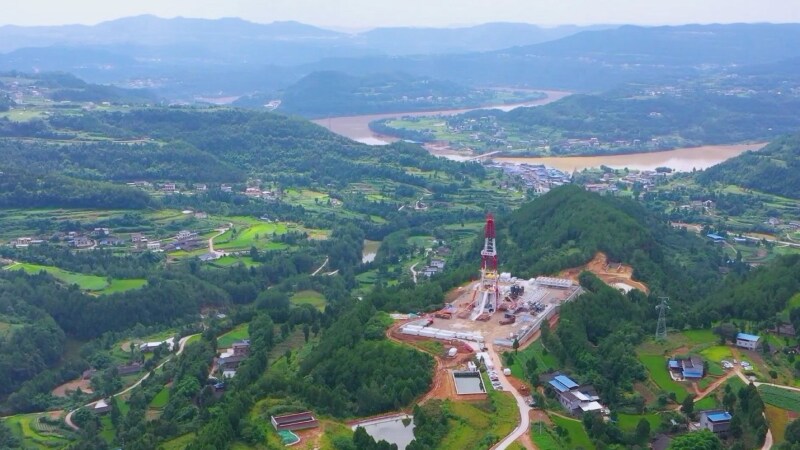Two of China’s national oil and gas companies are celebrating discoveries that signal a growing focus on the country’s deepest formations.
Sinopec said this month it made “a major breakthrough for China’s shale-gas exploration” after its tight-gas unit discovered an estimated 387.8 Bcm (13.7 Tcf) of new reserves in the Sichuan Basin. This is based on the results of an exploration gas well that the Beijing-headquartered operator said achieved a daily initial production peak at 258,600 m3 (9.1 MMcf/D).
Most notably, the project is being hailed by Sinopec for bolstering the potential of the Sichuan’s Cambrian-period Qiongzhusi formation which is a shale layer that ranges in depth from 4000 to 6000 m.
As China's leading shale-gas producer, Sinopec has drilled a number of test wells in the formation in recent years. However, the Qiongzhusi has largely been considered uncompetitive with the shallower Longmaxi formation that represents the focus of most shale activity in the Sichuan. Reasons the Qiongzhusi has remained undeveloped include its lower gas content and lower porosity as compared with the Longmaxi.
Despite the apparent challenges, Sinopec is claiming to have developed a new approach that it suggested may work beyond the Qiongshusi and help achieve the government’s goal of reaching 100 Bcm of gas reserves in the Sichuan and neighboring Chongqing.
In its announcement of the discovery, Sinopec said it “has shifted from the traditional method of seeking shale gas in organic rich black shale and established new evaluation standards for the Cambrian shale beds, which led to the discovery of the silty shale-gas exploration target layer. Faced by the challenges of the thin shale layer, large longitudinal stress difference, and difficulty in scaled transformation, the company has implemented a new fracturing process and fracturing fluid system to achieve multistage fracturing transformation.”
The company did not elaborate on its apparent technology development.
In a separate announcement earlier this month, the China National Offshore Oil Corporation (CNOOC) said it has also made an important gas discovery in a “deep-deep” formation.
Found offshore Hainan Island in the western South China Sea, CNOOC said the Baodao 21-1 gas field has been certified as holding an estimated 50 Bcm of natural gas (1.7 Tcf) and 3 million m3 of condensate. This comes after its exploration well was tested with an average daily initial production rate of 587,000 m3 (20.7 MMcf/D).
CNOOC said the project counts as the biggest discovery the region has marked in more than 50 years.
The state-owned operator noted that water depths in the area range from 660 to 1570 m while the total depth of the exploration well was almost 5200 m. A pay zone thickness of 113 m was reported in the Paleogene Lingshui formation.
CNOOC added that the development of the Baodao field will represent the “first deepwater, deep stratum” gas project in the South China Sea. The project will also represent the foundation of CNOOC’s ambition to amass 1 trillion m3 of gas resources in the South China Sea.
In its announcement, CNOOC emphasized its focus on accelerating the pace of exploration in deepwater with a focus on developing large and medium-sized reservoirs.


